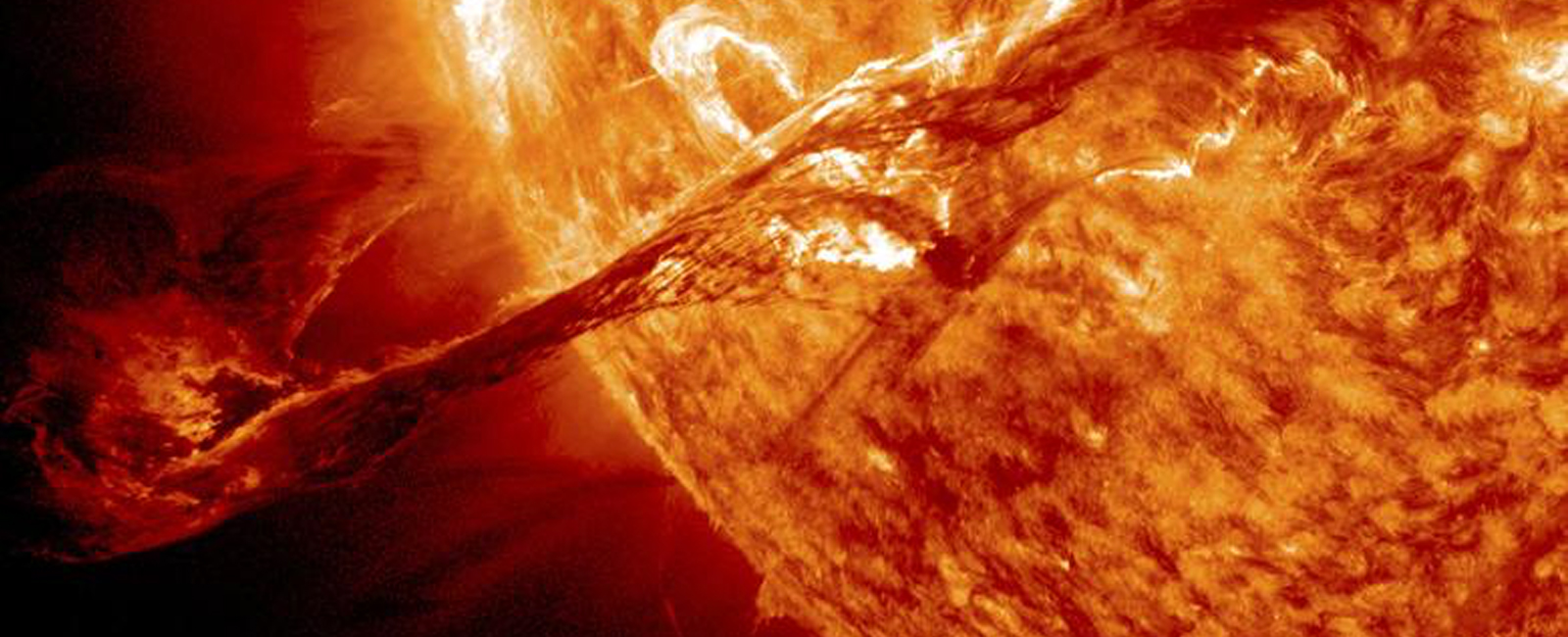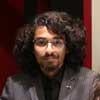As Pakistani stargazers eye cosmic secrets, lack of telescopes blurs vision
While use of telescope to create fascinating images and animations of sun's features seems probable in Pakistan, what prospects does astronomy have as a field in the country?

Late last month, I announced on Twitter of the acquisition of a new telescope in Pakistan.
The telescope is the largest production true solar hydrogen alpha telescope, called the Lunt 152t B1800 and it was acquired by my university, the Institute of Space Technology, Islamabad’s, department of space science.
My team and I unboxed and assembled it in our observatory which also houses the largest institute-owned deep sky telescope in Pakistan, a Meade 16-inch Schmidt Cassegrain design telescope.
This is a great achievement for Pakistan as currently, the solar scope is the only one of its class in Pakistan. Before this, Umair Asim, president of the Lahore Astronomical Society had this telescope in Pakistan which he used for astronomy outreach, but he later took it with him to Dubai.
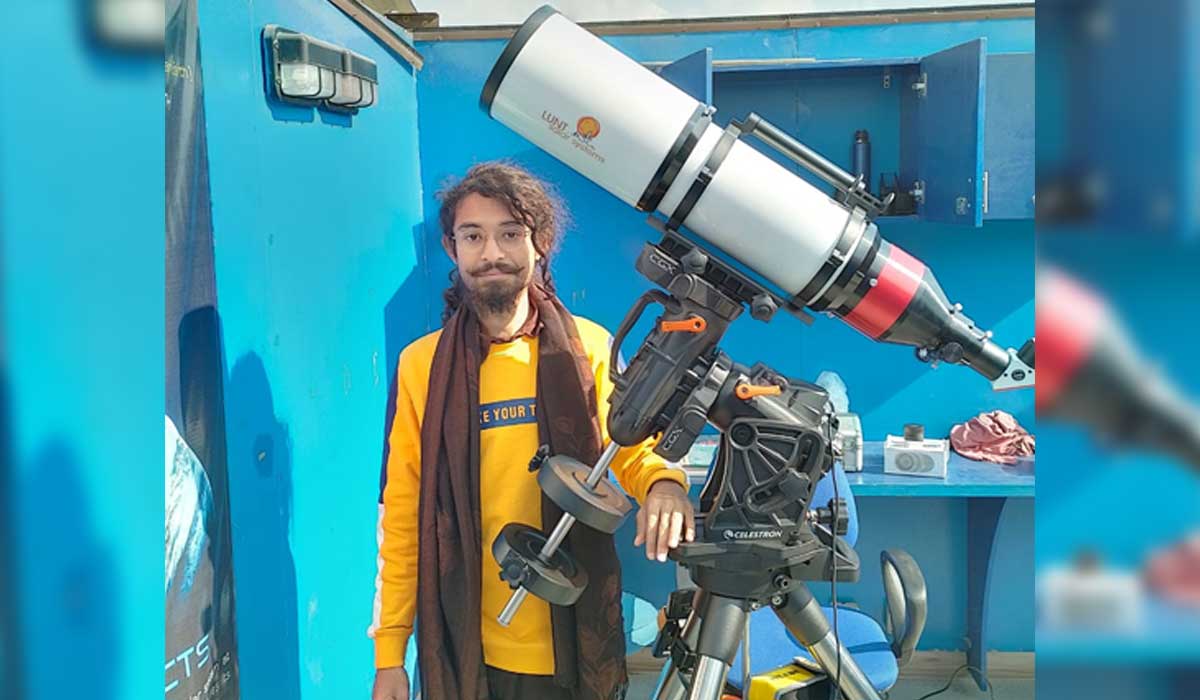
The telescope was acquired after a tremendous struggle that involved acquiring funding from different institutions, with little success until a grant from the National Center of GIS and Space Applications paved the way for its purchase from the USA.
Is astronomy a viable field in Pakistan?
The reason for the struggle is that astronomy is not a popular field in Pakistan. Every field needs on-ground labs to generate research and widen the scope, and for astronomy that equates to an observatory equipped with research-grade telescopes, data acquisition equipment such as spectrographs, astronomy cameras and high-speed computational assets.
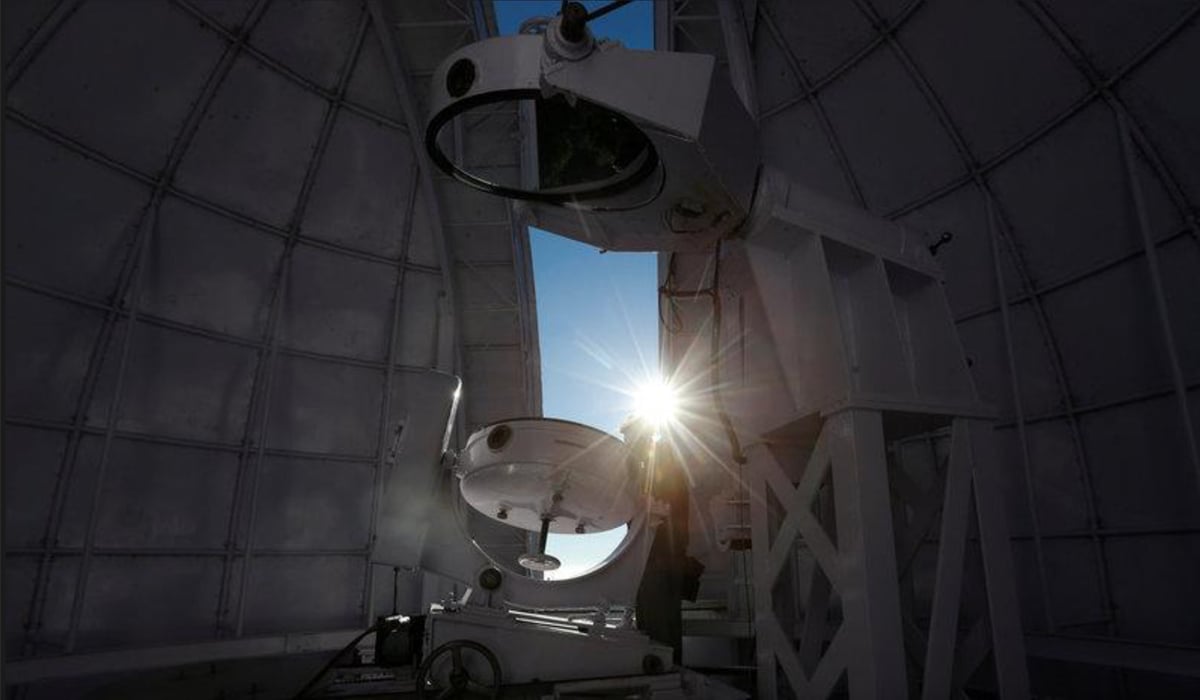
We have no such fully operational observatory here. Our neighbouring country India has top-notch telescopes of greater than a meter in aperture size which are used in professional research in collaboration with foreign researchers. Pakistan, however, has no observatory for even local researchers.
City skies on top also are full of light pollution and general pollution which hinder the usage of telescopes. However, Pakistan is home to very few observatories which are built by amateur astronomers for general astronomy and imaging privately, for example, there is a private dark sky observatory in Balochistan by the name of Taqwa Observatory and another in the heart of Karachi called the Kastrodome.
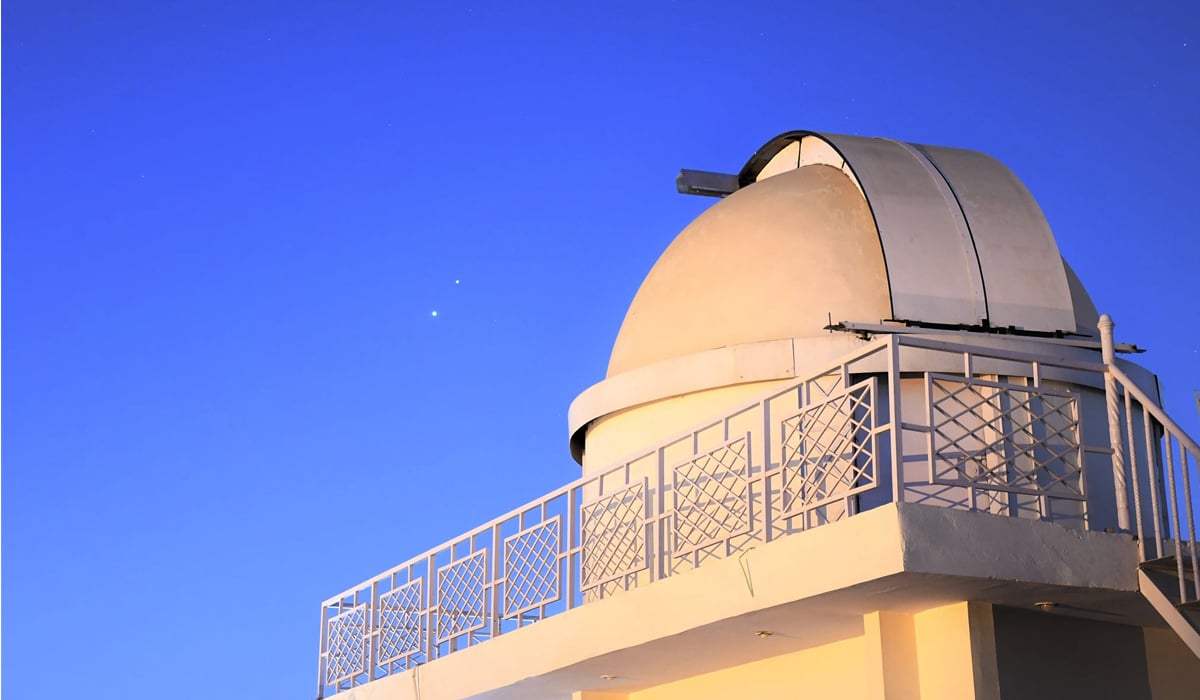
So, the interest in astronomy is prevalent, but not catered enough on an institutional level. Recently, university students participated in the International Astronomical Search Collaboration (IASC) and made preliminary asteroid discoveries by analysing the datasets provided.
The youth is highly interested in exploring the cosmos and the need to develop into one of the oldest sciences, astronomy, is of essential need.
To tackle the need for proper observatories, the observatory of IST is slowly equipping itself with research equipment and is the first of its type in any institute in Pakistan. Soon these facilities will be accessible for astronomy research and outreach in our country, without having to rely on facilities abroad.
Exploring the sky
With the arrival of the new solar telescope, the observatory at IST now houses three telescopes that are operational almost daily whenever the skies allow, with more telescopes and world-class astronomy equipment on the way. The observatory is used for night sky observations, deep sky imaging of nebulas and galaxies and astronomical research like photometry and spectroscopy.
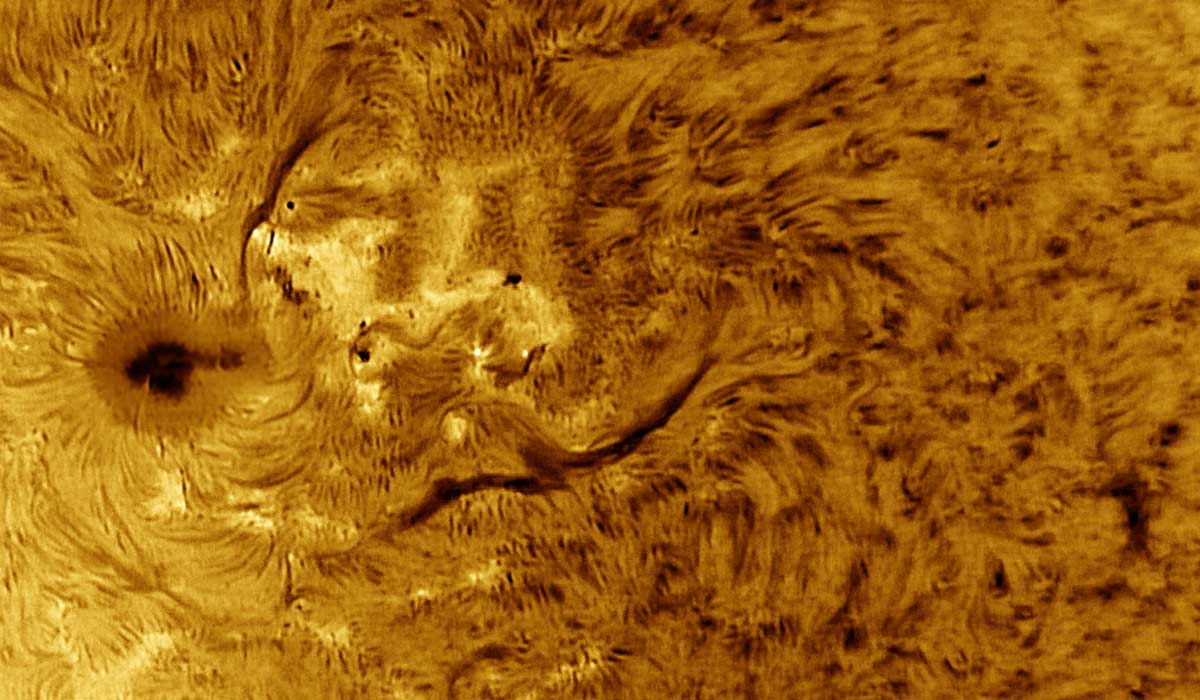
Photometry is the study of the light curves of stars which can help discover exoplanets, and investigate the physics of stars. Spectroscopy also assists in stellar astrophysics along with determining the chemical composition of stars and luminous objects in space.
What sets Lunt 152 apart?
Here are some technical facts about the new Lunt 152 telescope: It is a 6-inch refractor telescope, which utilises a lens to gather and focus light. The telescope includes a pressure-tuned etalon, which is an interference-based filter, which creates a light bandpass of
This means that the interference filter optically narrows down light to the shape of a fine-tooth comb, with each tooth being 0.065nm in thickness (deep sky narrowband filters have band passes from 3-12nm) and each tooth is separated by 1nm.
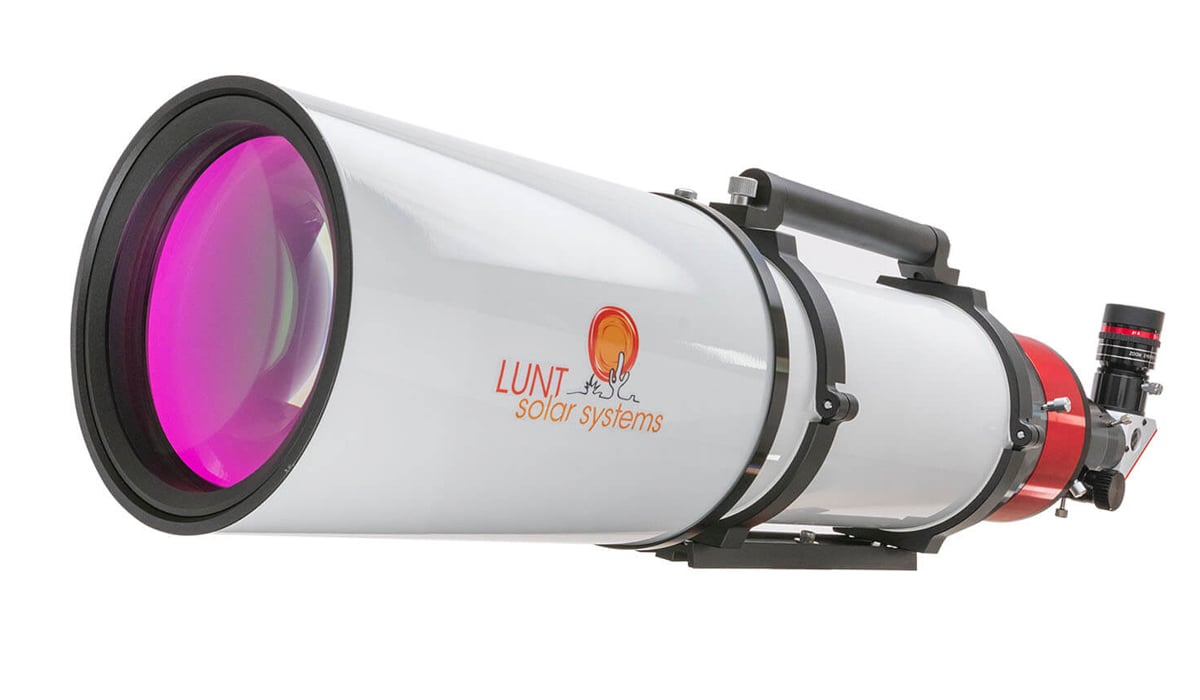
The goal here is to get the narrowest and most precise band of light centred around the Hydrogen alpha emission line which is present in the sun’s chromosphere or its upper atmosphere (where all the energetic features are present). This comb of light then travels down the telescope and is filtered by a blocking filter which only lets the Hydrogen alpha band (or tooth in our case) pass through. H-alpha is around 656.28nm.
The reason to use these complex filters to view a single wavelength of light is that the sun shines in pure white light, and if seen through a white light filter, the sun's chromosphere is invisible as the photosphere is so bright that we only see the sunspots and granulation of the lower surface of the sun.
Since the sun's chromosphere is comprised of a lot of ionised Hydrogen, viewing it in the light emitted by Hydrogen offers a unique view and allows for research into solar dynamics.
We plan on using it to create fascinating images and animations of the sun's features. The features to look out for are sunspots, which are cool dark regions on the sun that form due to dense magnetic fields.
These also are accompanied by rare flares and filaments which are dark streams of ionised gas floating above the surface. On the edges of the sun, we look for prominences, which are huge clouds of ionised hydrogen protruding off the edge of the sun.
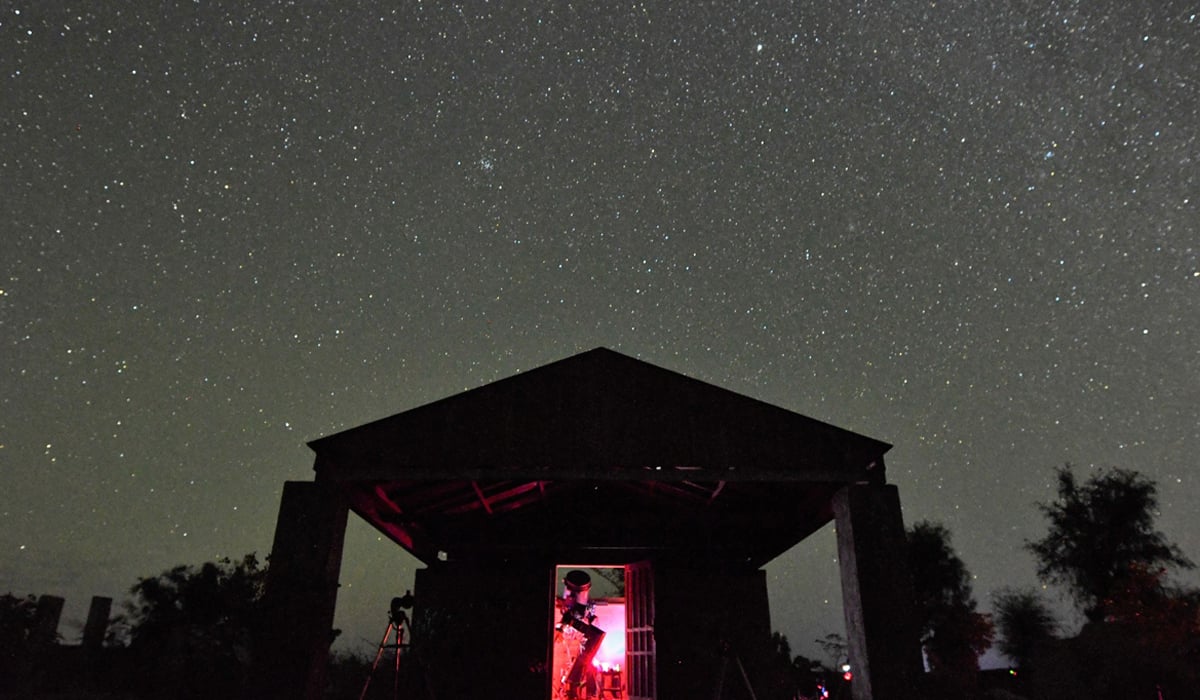
The telescope works best with monochrome cameras whose sensors detect light of all wavelengths and don’t filter them. In colour cameras like DSLRs, the sensor has a matrix of filters over each pixel.
In DSLRs, the filters are arranged in a 2x2 square like Red Green Green Blue. Since Hydrogen alpha is a single wavelength of light, the pixels of the sensor receive only one red signal and the other 3/4th of the sensor is black. This reduces resolution and also makes images appear muddy as colour cameras balance colour using references from the other colour pixels.
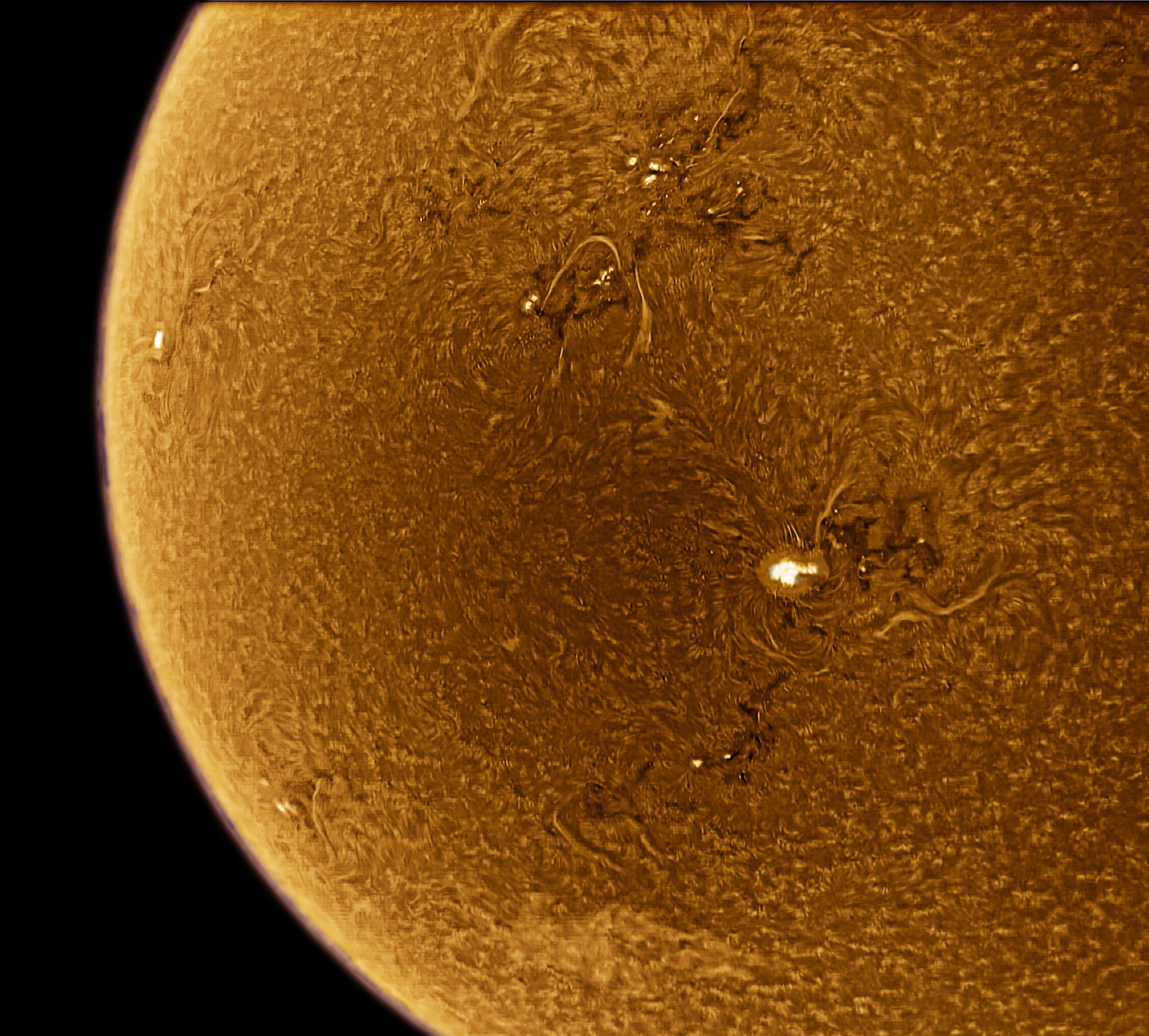
Further, Infrared cut filters reduce more light and cause bad image quality. Therefore, dedicated monochrome cameras are recommended which output a black-and-white image. The image is then processed and the colour is added artificially to match reality.
In fact, to produce sharp images, we don’t capture single images at all. Rather we take videos at high frame rates of around 40 to 60 seconds. The videos are separated into frames and then combined in a process called stacking, which takes the best image percentage and combines it to increase the quality and signal-to-noise ratio.
The end image is much sharper and has more detail. This is done because our atmosphere has a lot of turbulence which causes features and details to blur out and distort due to the refraction of light. The same processing techniques are used for the beautiful images of nebulas and galaxies you see from Hubble or the James Webb space telescopes.
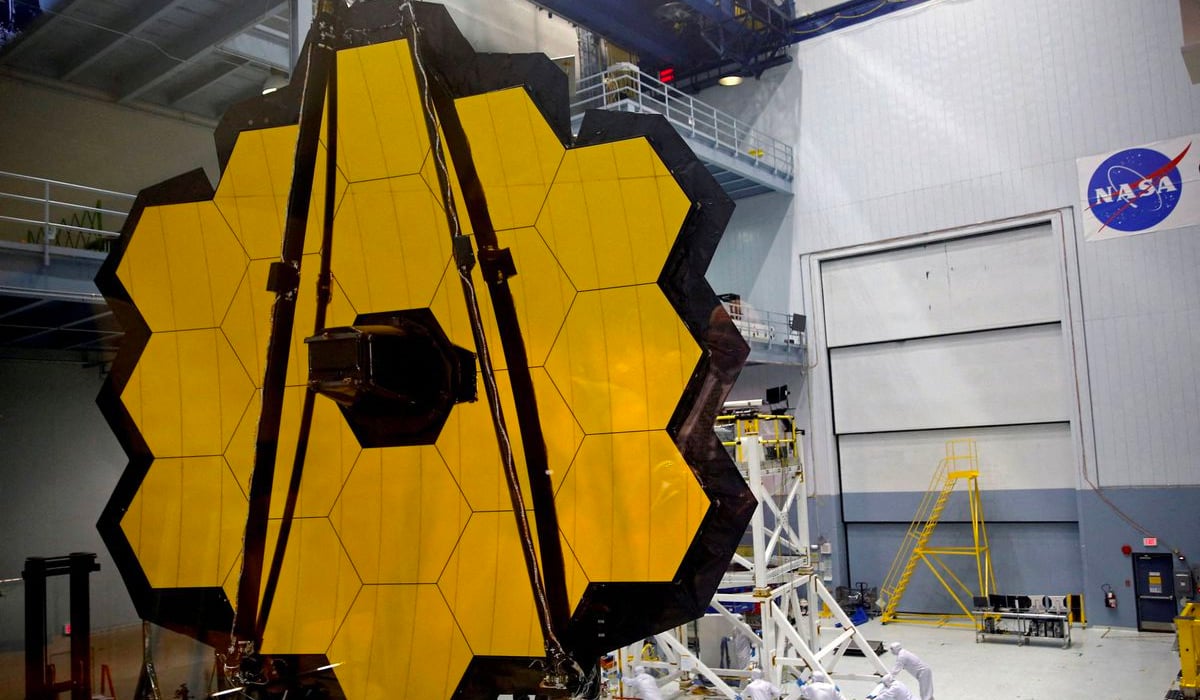
So overall, the whole process of astronomical data acquisition and processing to a final image is long but fun — and rewarding in the end.
Other than imaging the new telescope offers unmatched visual views of the sun through the eyepiece and we hope to invite the public to different events to see the sun through the telescope. This is one of the few times one can actually see the sun through a telescope, as mostly you will be instantly blinded if you try using a regular unfiltered telescope.
Muhammad Shaheer Niazi is a 22-year-old scientist pursuing an undergraduate degree in physics. He published his first research paper at age 16 in the Royal Society Open Science Journal and is part of the Forbes 30 under 30 list for 2018. He tweets @M_shaheer_Niazi
— Banner image by Reuters
Disclaimer: The viewpoints expressed in this piece are the writer's own and don't necessarily reflect Geo.tv editorial policy.



